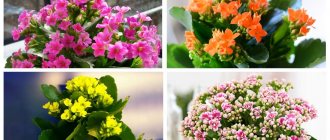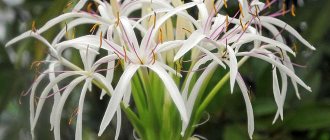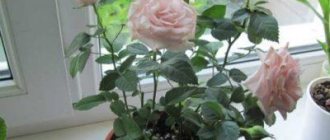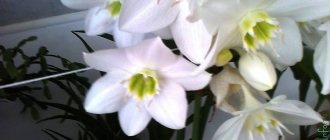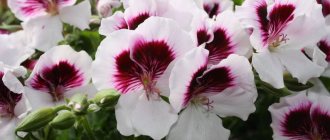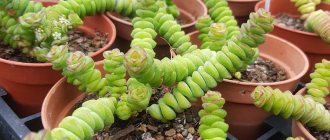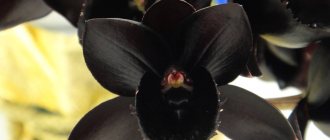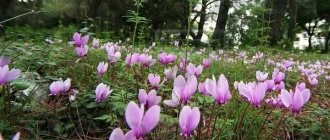Houseplants have been decorating people's homes for centuries. They perform not only a decorative role. They, like other plants, produce oxygen through the process of photosynthesis and create a favorable biological environment in the room where they are located. One of these is the Plant Mix .
Plant Mix or, as it is also called, a mixture of plants, is a relatively new type of indoor plants. This is a whole “home” garden, which contains several plants of different types at once. They are planted in identical flowerpots and substrates. Together they make up unique compositions that will be an excellent decoration for any space.
As a rule, they are planted in one container - a terrarium, an aquarium, shells, etc., in order to achieve a greater visual and decorative effect. The leaves can be of different colors, which makes the composition even more interesting. Plant Mix is most often composed of succulents, cacti and ficus, but other flowers can be used. It is important that they need approximately the same growing conditions. In one set you can find up to 25 different representatives of the flora.
- Choosing a location and lighting
- Air temperature and humidity
- How to water correctly
- Trimming
- Feeding and fertilizers
- Bloom
- Transfer
- Features of care depending on the time of year
What to do after purchasing a plant?
How to transport
It should be transported with extreme caution. You should choose a large box that will accommodate the leaves. For reliability, secure the box or container where the flowers are located with straps or fasteners. In winter, transportation should be carried out as quickly as possible - plants should not remain in the cold for more than 10 minutes. If you are planning a long-term trip, it is recommended to pack hot water bottles in the box to maintain the optimal temperature. It is better to carry out transportation on a flat road and periodically make stops, leaving them to “breathe” with oxygen if they are transported in a closed container.
This type of plant has its own characteristics when transplanting. They are connected with the fact that such a complex is made up of flowers that have a slow growth rate . They cannot be replanted immediately after you bring them from the store - they must first get used to the environment where they will be. For transplantation, containers of the same volume and type are needed. For visual effect, it is better to choose pots or containers of the same color.
Soil selection
The soil is selected to be universal, since there are several plants at once, the requirements of which it must meet. The soil mixture is selected specifically for your species.
Selection of pot
You can choose any pot. It is desirable that it be larger than the previous one, the main thing is not smaller, then the root system will have room to grow and the plant will only become more beautiful and thicker. You can plant it in an aquarium, terrarium, large vase - all you need is your imagination.
How to perform a transplant correctly:
- Prepare the pots - place a small layer of drainage on the bottom of each, about 2-3 cm . The drainage should consist of several types of stone - not only expanded clay, but also pebbles, crushed stone or fragments of ceramics.
- Soil is laid on top of the drainage. The volume of soil is selected based on the development of the root system.
- The plant is carefully transferred to the ground. The roots must be carefully straightened so as not to damage them.
- Add the required amount of soil.
- Water generously.
The replanting procedure must be done as carefully as possible, since it originally appeared in Europe, where flowers, as a rule, are not replanted.
How to transplant flowers correctly
Plant mix is usually composed of young, slow-growing flowers. Plants should not be replanted immediately after purchase - they need to get used to the new conditions. Containers for flowers should be taken of the same size and compatible colors so as not to disturb the composition and maintain the decorative nature of the set.
The procedure is standard:
- in each pot you need to lay a layer of drainage, which consists of crushed stone, pebbles, fragments of ceramics or expanded clay
- Nutritious soil is placed on the drainage layer, taking into account the size of the roots
- carefully place the plant in the ground, straightening its roots, and add the missing soil
- the final stage is abundant watering
Plant mix compositions began to spread from Europe and it is not customary to replant them there. But it is known that purchased plants do not live long without replanting. Therefore, everyone should spend a minimum of effort in order to preserve the decorative composition for a long time.
Brief description of care
To provide the plant with proper care, the following factors must be taken into account:
- Air temperature and humidity - in winter from 15°C and above, in summer within 20-23°C.
- Lighting – avoid direct sunlight and dark places.
- Watering - watering as the top layer of soil dries out. No more than once every two weeks.
- Soil – selected based on the plants included in the mix.
- Pruning – it is recommended to trim old leaves in the spring to stimulate the growth of young shoots.
- Dormancy - the plant remains in a dormant state during the winter, preparing strength and energy for new shoots in spring and summer.
- Flowering is individual for each plant.
- Feeding - performed in spring or summer, twice a month. You can use mineral and organic fertilizers. For some flowering species, superphosphate is used.
- Transplantation - the first transplant is carried out a few weeks after acquisition. The next transplant as the plant grows.
Transplantation and propagation
All mixes are based on young plants. They usually grow very slowly. After purchase, they must be replanted, otherwise they will not live long. Although in Europe, where Plants Mixes came from, flowers are not replanted.
Before planting, determine the type of plants included in the mix. The flowers must stand for some time and acclimatize in the new place.
Information about this plant cannot be found in old Soviet home encyclopedias. The flower was counted among the components of bourgeois life, by the bourgeoisie after...
Ginger is an evergreen plant of the ginger family that occurs naturally in South Asia. Its underground part is used in everything…
Impatiens, or balsam, ampelous belongs to the balsam family. Balsamaceae are native to the tropics and subtropics of Africa. Successfully cultivated in regions with…
Violets are small, bright flowers that look great in pots. But getting them to bloom at home is not so difficult. Florists...
Anthurium often does not bloom at home. People eagerly wait for the flower stalk to appear, but the plant only produces lush greenery...
Geranium came to European countries at the end of the 16th century from Africa. The plant is unpretentious and easily propagated. The flowers are regular in shape, large, calyx...
The ornamental plant Chinese rose is also called Chinese rose, Chinese Hibiscus (lat. Hibiscus rosa-sinensis); is one of the species of the genus Hibiscus (lat....
In summer, geraniums delight with abundant flowering in the garden. Pelargonium, or geranium, is native to South America. The flower does not tolerate low temperatures well, so...
Geranium (pelargonium) is an unpretentious indoor plant; it is easily propagated by cuttings. To make the plant look attractive, it is recommended to trim it periodically. Twigs received...
Queen, princess, queen of Pelargosh - this is how flower growers lovingly call the royal large-flowered geranium
Created by German breeders, it attracts attention and makes you fall in love...
Begonia is an expressive, delicate flower with a subtle sweetish aroma. The plant is a perennial and appeared by crossing several varieties. Her…
Lovers of attractive indoor plants are trying to find answers to these questions. It remains one of the most capricious, but the reason for this is...
Geranium is one of the most unpretentious indoor plants. It grows well in a variety of soils, but flowering is difficult to achieve. Some owners...
Clerodendrum is one of the most colorful indoor plants. Only some people still consider it street. They cannot achieve flowering...
Spathiphyllum (“female happiness”) is a popular indoor plant belonging to the aroid family. Spathiphyllum is a perennial evergreen tropical plant with a short…
Any flower is beautiful in its own way, but only spathiphyllum is popularly called “female happiness”. Legend has it that the plant helps lonely women find...
Poinsettia is a plant belonging to the Euphorbia genus, Euphorbiaceae family. The official name is Euphorbia the most beautiful. Popular flower...
“Plant mix” is a fairly new direction in indoor floriculture. The composition is a set of plants, similar in terms of keeping conditions and planted in identical pots with a single tray, or a mini-garden of flowers in one wide container. By providing proper care for plant mix flowers at home, you can preserve their decorative and attractive appearance for many years. The correct selection of plants, popular compositions, maintenance, care and pest control are the main points that a gardener needs to know.
How to care at home?
Watering differs at different times of the year. There are no exact recommendations regarding watering, since Plant Mix is a mixture of different flowers, each of which has its own need for watering. The frequency and volume of watering can only be determined by trial and error.
It should be remembered that, as a rule, such mixes contain unpretentious species that tolerate different conditions well. It is better to “not add” moisture than to overfill, because excess moisture is much worse than its absence. Excess water can lead to various diseases, such as black rot. The recommended frequency of watering is once every 2 weeks.
Choosing a location and lighting
Diffused sunlight serves as the light source for optimal growth . It is important to avoid direct sunlight. Shady places for planting the plant are not suitable.
Air temperature and humidity
The optimal temperature in which plants feel comfortable is from +20 to +23 °C in summer and more than +15 °C in winter.
How to water correctly
In summer, watering should be done when the top layer of soil has dried out. If there are moisture-loving plants among the plants, then they must be additionally moistened with a spray bottle. This also helps remove dust from the leaves and improves moisture absorption and respiration. Plant Mix likes to be watered with settled water.
In winter, watering should be less abundant.
This is due to the following facts:
- Metabolic processes decrease as the plant gains strength for future flowering and growth in the spring.
- The air temperature is lower, due to which moisture evaporates less quickly and the soil remains moist longer.
The recommended frequency of watering is no more than 1 watering within 14 days . If there is excess moisture, the plant can get sick - it is important to monitor soil moisture and not allow excess moisture!
Trimming
Pruning should be done regularly . Pruning is not done immediately, when most of the shoots are still very tiny - this way you risk leaving flowers without leaves. Pruning is done when the plants are already large. Trim in stages, at the moment when young greenery appears.
Feeding and fertilizers
Fertilizing is usually carried out in the spring-summer period. Fertilizers are applied 2 times a month . For greater efficiency, alternate mineral and organic fertilizers. In winter, fertilizing is not carried out. For some types of plants, you can additionally use superphosphate.
Bloom
Flowering is rare, since mixtures rarely contain plants that bloom. However, special varieties of cactus and aloe, crassula and agave are sometimes found in compositions. Aloe flowers are cone-shaped and come in a variety of colors - yellow, pink, red and orange.
Cacti begin to bloom only after 3-4 years , subject to dormancy in winter. To flower, they need to be watered no more than once a month and maintain the temperature within +12°C .
Agave blooms even later - only after 10-30 years. As a rule, at home it is difficult to see its flowers, but if they do come out, the inflorescences look simply amazing - small, neat flowers.
Transfer
The transplant is not performed immediately. The plant needs time to adapt to new conditions - a few weeks is enough. For replanting, you should select soil that meets the general requirements and needs of all plants in the mix. A drainage layer is first poured into an empty pot, followed by soil.
Plants are planted carefully so as not to damage the root system. After planting, you need to add soil to the top and water the plant. Further replanting as the plant grows.
Features of care depending on the time of year
In winter, watering should be reduced, as the plant enters a dormant period, and the ambient temperature also decreases, which prevents the rapid evaporation of moisture from the surface layers of the soil. In summer, watering should be more abundant.
Avoid exposure to direct sunlight. It is best to water during the day, as early as possible. Depending on the composition of the mix, plants can be sprayed throughout the day.
Features of plant mix flower care
Both amateur gardeners and beginners can grow a plant mix flower at home without any problems (translated from English as “a mixture of plants”). This species appeared relatively recently on flower markets, but despite this, it managed to interest many flower lovers. The new product in question is, first of all, a living organism that needs constant care and attention. Knowing how to properly care for a plant mix flower and taking into account the recommendations of experts, all flower growers, without exception, will be able to grow a magnificent specimen at home that will decorate any interior.
What problems might there be and how to solve them?
When growing any plant, problems can arise. They did not ignore the Plant Mix plant either. The most common problem is illness.
As a rule, plants are affected by fungal and viral diseases. They penetrate the soil if it is not properly processed or if there is no proper care for the plant.
| Disease | Description and solution |
| Black rot | The biggest danger is black rot. This disease appears when the plant is overwatered. It starts from the roots, gradually moving to the ground part of the flower. To save the flower, it is transplanted into another container and the soil is completely replaced. The roots are washed with a solution of potassium permanganate, and the plant is treated with fungicidal agents. The frequency and volume of watering should be reduced. |
| The plant dries up | The reason for this may be too dry air or watering with unsettled, hard water. The tips of the leaves of the plant begin to dry out, subsequently they turn yellow and fall off completely. Another cause could be sunburn or improper fertilization. Based on the possible reasons, solutions may be: moving the flower to another place, watering with high-quality, settled water, changing fertilizers or reducing the frequency of fertilizing, humidifying the air. |
| The plant does not bloom | This may be due to lack of light, exposure to direct sunlight, as a result of which it develops a burn, or due to insufficient or improper feeding. Fertilizers and the frequency of their use should be reconsidered, and the plant should be placed in more comfortable lighting conditions. |
Rules for transplantation and reproduction
After purchasing a plant in a store, it cannot be replanted immediately; it must be allowed to adapt to the new environment and placed in quarantine. Store-bought soil may contain pathogenic microorganisms and pests, so during the quarantine period you need to carefully monitor the condition of the flower. If pests or obvious symptoms of diseases are detected, the soil mixture is urgently replaced.
For the “plant mix” set, identical pots are selected that fit well into the overall color scheme of the room. A drainage layer (broken shards, crushed stone, expanded clay) must be placed at the bottom. The bush is placed in the center, the rhizome is straightened and the container is filled to the top with soil. The final stage of replanting is abundant watering.
Transplanting plants for plant mix
When transplanting a group of plants into one pot, the growth rate and size of each specimen in adulthood are taken into account so that one species does not drown out the other. Each flower should have enough space for the normal development of the root system and aerial parts.
Otherwise, representatives of the succulent group are transplanted. The drainage layer for them should be at least 1/3 of the height of the pot. The first watering after planting is carried out no earlier than 2–3 weeks.
Plants used to make a “plant mix” are propagated by cuttings. The best time for this is the beginning of spring. When pruning overgrown plants, they prepare material for cuttings - a young healthy shoot: they cut it with a clean, sharp blade so that there are at least 3-5 buds on it. The optimal length of the cutting is 6–8 cm. It can be rooted in a loose substrate of peat and sand with the addition of sphagnum. Before planting, it is advisable to treat the cuttings with a root growth stimulator.
Houseplant cuttings
When planting directly into the ground, the cuttings must be placed in a greenhouse or simply covered with a plastic bag on top. The greenhouse is periodically ventilated, and after 2-3 weeks the shelter is removed. If the air in the room is dry enough, the plants after greenhouse conditions are sprayed with a spray bottle several times a day.
Peperomia, sansevieria and a number of succulents successfully reproduce by leaf. For rooting, it is enough to cut or carefully break off the leaf blade, dry it, place it on a slightly damp substrate and deepen it a little. The need for a greenhouse depends on the type of plant; for example, cacti, echeveria, sedum and other representatives of the succulent group do not require greenhouse conditions. The composition of the soil is also directly related to the plants from which the “plant mix” composition is created.
Pests and ways to combat them
For pests, Plant Mix is a tasty morsel. The plant is attacked by different types of pests:
- Scale insects are small winged flies.
- Aphids are immobile and small in size. They completely cover all leaves and stems, absorbing all the juices of the plant.
- Thrips . When thrips appear, the plant is treated with insecticides.
- Ticks . Spider mites cause leaves to curl and dry out. They multiply very quickly and lead to the rapid death of the plant.
Spider mite on a plant
If mites are detected, the plant should be treated with a cotton pad and the parasites should be removed manually. If you find signs of pest damage to a plant, you should immediately isolate it from other flowers located nearby, as parasites quickly multiply and move from one plant to another.
If only a small area is damaged, then local treatment with insecticidal agents , and if the affected area is large, then the entire plant, as well as those flowers that were nearby, are sprayed with a soap solution made from laundry or tar soap.
The most resistant to parasites are succulents and cacti - their leaves are smooth and dense, and are also covered with a waxy cuticle, which prevents parasites from multiplying on the surface of the leaves.
If leaves are damaged by aphids, it is necessary to tear off the leaves and burn them, or throw them away in a tightly tied garbage bag.
Plant mix - what is it?
Plant mix is a miniature garden of several young plants of the same size, planted in separate identical pots. All specimens are collected on one decorative pallet or in a box and represent a unique colorful composition.
You can often find such compositions planted in one container. This could be an aquarium, terrarium, decorative shells or caves. To create such compositions, several varieties of plants of the same species are selected. Their foliage can be different colors, have variegated, intricate patterns, and they can bloom in different shades or at different times. The most common compositions are those made up of cacti, ficus and succulents, which do not have a fast growth rate.
To create a Plant Mix, plants with similar conditions and appearance can be selected.
One such set can include up to 25 representatives of indoor flowers. Typically, all of them are undemanding in care, require moderate watering and are well adapted for living in apartment conditions.
Many flowers in Plant Mix not only have a spectacular appearance, but also provide benefits to humans. Dieffenbachia, spathiphyllum, ivy, palm and fern plants release substances into the environment that can purify the air from fumes from household chemicals, tobacco smoke and other harmful substances, which has a positive effect on the health of households. They are also able to humidify too dry air. Dracaenas, ficuses, cacti and succulents resist radiation well from the use of office equipment and computers.
Basically, Plant mix, consisting of different plants, prefers moderate watering and periodic spraying in the hot season. They should be placed in well-lit rooms, avoiding exposure to direct sunlight. In spring and summer, plants should be provided with a temperature within 20-23 degrees. And in autumn and winter - no lower than 15 degrees. Also, in winter, watering and fertilizing should be reduced, because most plants enter a dormant period.
Composition of the set and flowering time
In most cases, the composition is made up of succulents or plants that do not bloom. They are unpretentious and easier to care for. In the wild, these plants bloom often, but rarely at home. Flowering dates for some flowers from the set:
- Agave. You can only see agave blooming in the wild. It has ugly small flowers collected in inflorescences. Their length is 1-2 meters. Flowering occurs after 10-30 years. The plant dies immediately after flowering.
- Crassula. To see how the Crassula blooms, you need to not water it for 30 days. During the dormant period, it gains strength and then begins to bloom. But lack of water threatens wrinkling of the leaves. Their appearance will be restored after watering is resumed.
- Cacti. If you set the air temperature in the room from +10 to +12 degrees and water the cacti once a month all winter, then in the spring they will bloom. Flowering of the cactus begins at the age of three or four.
- Aloe flowers are cylindrical in shape and form into cone-shaped inflorescences. Their color can be yellow-pink or orange. Aloe with red flowers looks very beautiful. The color of the flowers depends on the plant variety.
Set components
Usually the composition includes ornamental plants that do not bloom, but differ in the color of the leaves and their structure. Even their approximate height is the same, which allows them to be rearranged and even taken out into the garden in spring and summer, if possible.
Crassula
The flower has another name - Crassula, and belongs to the Crassulaceae family. The plants have dense, shiny leaves that have the ability to retain moisture. The plant is a succulent.
There may be several types in the mix. The main difference between them is the structure and structure of the leaves, as well as the difference in shades. They can be either green or greyish; there are also variegated ones.
It is convenient to make mixes of Crassula or money tree species, since the plants do very well in the shade. Therefore, any place in the room will be acceptable for them.
cacti
For these plants, an acceptable temperature will be approximately +10 - 12 degrees. Watering should be done no more than once a month. Then some species are able to bloom.
The flowering period begins only at 3 or 4 years of age. The different structure of the above-ground part looks very original in the set. It is better to place these exotics near equipment (TVs and computers that emit harmful energy).
The leaves of these decorative flowers are cylindrical in shape. The inflorescences form into inflorescences. Blooms can be subtle shades of orange and yellow. Red flowers look very beautiful. Each variety has its own shade and color.
Description and characteristics of the species
In the circles of experienced gardeners, anthurium is known as red tongue, flamingo flower or male happiness. It personifies fidelity in love and is a talisman for newlyweds. He owes all this to the old legend about a girl who chose the flames of fire instead of marrying someone she didn’t love. According to legend, an anthurium grew on the spot where the girl was burned.
In nature, species occur in the form of climbing, herbaceous, and very rarely tree-like forms. There are forms that are perfectly adapted to life among stones. The plant grows up to 40−80 cm in height. The leaves of different species generally have a glossy, dense texture. Plants with fragile leaves are less common. All types differ in leaf blade. It can be carved, heart-shaped, round, with a blunt or sharp top.
Bright, unusual anthurium flowers stand out clearly among the beautiful decorative foliage. The flowers themselves have a dense, leathery texture. In nature, red and white flowers are most often found. Indoor plants come in a much wider range of colors. The flower can be red, white, orange, pink. Hybrid varieties can have even more varied colors. During the growing season, the plant has a bud in the form of a cone, spiral, ball or club.
The plant has aerial roots. They grow upward and are covered with a special substance, velamen, which helps maintain the life of the flower under conditions of sudden changes in humidity and drought.
To grow this beautiful flower yourself, you need to know some care features.
Similar names
Fittonia Mix
Fittonia is a native of South America. The plant belongs to the Acanthaceae family and is represented by only 10 species . The plants are distinguished by beautiful unusual leaves, which, depending on the species, can be green, white, red or lilac.
This allows you to plant 5-6 species in one flower pot and get a bright and unique interior decoration. It is this, and not a single plant, that is called Fittonia mix.
Plant Mix
Sets consisting of several different plants that are similar in conditions of maintenance and create a unique composition. Small flower pots usually about 10 cm in diameter , are placed on a special tray or in a decorative box and represent a miniature garden.
Dracaena palm mix
Dracaena is often confused with palm, but it is a completely different plant. Varieties of dracaena, which combine the decorative features of several of its species, began to appear in gardening and flower shops with an unusual name, dracaena mix.
Caring for dracaena mix is no different from caring for regular dracaena.
Dracaena mix
This is the correct name for the dracaena that was described above. It should be remembered that considering dracaena a palm tree is a big mistake. Optimal conditions for keeping a palm tree are absolutely not suitable for dracaena. If you do not take this into account, you can destroy the plant .
The abundance of plants in its composition allows you to get acquainted with different species and get a large collection of plants at once, which, despite their diversity, are similar in care. At first, this is very convenient, it allows you to perfectly decorate the interior and not be disappointed in your chosen hobby.
| 2 | Due to the decrease in temperature, moisture evaporates much more slowly. Spraying is not carried out in winter |

